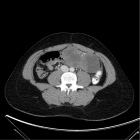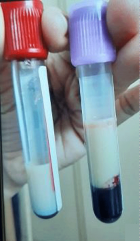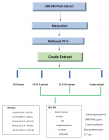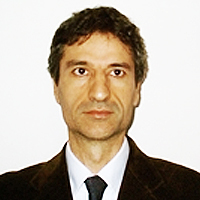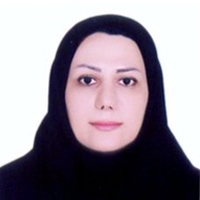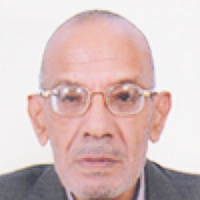Abstract
Case Report
Psychological distress in a social media content moderator: A case report
Yassine Otheman* and Roukaya Benjelloun
Published: 12 October, 2020 | Volume 4 - Issue 1 | Pages: 073-075
The expansion of social media platforms has given birth to a specific professional category in charge of « sanitizing » social media and keeping it free of “inappropriate” content. These content moderators, as a result of being constantly exposed to potentially traumatic images, may be at risk of developing stress-related symptoms. Here we present the case of a social media content moderator who experienced intrusive images, anxiety symptoms and insomnia.
Literature about this subject is very scarce, while the need is increasing to assess this phenomenon and set up strategies of monitoring, counseling and treating this category of workers.
Key points
The expansion of social media platforms has given birth to a specific professional category: content moderators.
As a result of being constantly exposed to potentially traumatic images, content moderators may be at risk of developing stress-related symptoms.
The need is increasing to assess this phenomenon and set up strategies of monitoring, counseling and treating this category of workers.
Read Full Article HTML DOI: 10.29328/journal.apmh.1001024 Cite this Article Read Full Article PDF
Keywords:
Social media; Content moderator; Distress; Insomnia
References
- https://www.statista.com/statistics/278414/number-of-worldwide-social-network-users
- Lewis SP, Heath NL, St Denis JM, et al. The scope of nonsuicidal self-injury on YouTube. Pediatrics. 2011; 127: e552–557. PubMed: https://pubmed.ncbi.nlm.nih.gov/21339269/
- Temporini H. Child pornography and the internet. Psychiatr Clin North Am. 2012; 35: 821-835. PubMed: https://pubmed.ncbi.nlm.nih.gov/23107565/
- Moreno MA, Ton A, Selkie E, Evans Y. Secret Society 123: Understanding the Language of Self-Harm on Instagram. J Adolesc Health. 2016; 58: 78-84. PubMed: https://pubmed.ncbi.nlm.nih.gov/26707231/
- Fineberg NA, Demetrovics Z, Stein DJ, Ioannidis K, Potenza MN, et al. Manifesto for a European research network into Problematic Usage of the Internet. Eur Neuropsychopharmacol. 2018; 28: 1232-1246. PubMed: https://pubmed.ncbi.nlm.nih.gov/30509450/
- Gillespie T. Custodians of the Internet. Amsterdam University Press. 2018.
- Idås T, Backholm K, Korhonen J. Trauma in the newsroom: social support, post-traumatic stress and post-traumatic growth among journalists working with terror. Eur J Psychotraumatol. 2019; 10: 1620085. PubMed: https://pubmed.ncbi.nlm.nih.gov/31231480/
- Bourke ML, Craun SW. Secondary traumatic stress among Internet Crimes Against Children task force personnel: impact, risk factors, and coping strategies. Sex Abuse. 2014; 26: 586-609. PubMed: https://pubmed.ncbi.nlm.nih.gov/24259539/
- Adams RE, Boscarino JA, Figley CR. Compassion fatigue and psychological distress among social workers: a validation study. Am J Orthopsychiatry. 2006; 76: 103-108. PubMed: https://pubmed.ncbi.nlm.nih.gov/16569133/
- Eiser AR. Postmodern Stress Disorder (PMSD): A Possible New Disorder. Am J Med. 2015; 128: 1178-1181. PubMed: https://pubmed.ncbi.nlm.nih.gov/26031889/
Similar Articles
-
Implications on mental health by the coronavirus disease 2019 (COVID-19) pandemic: The role of general practitionerJose Luis Turabian*. Implications on mental health by the coronavirus disease 2019 (COVID-19) pandemic: The role of general practitioner. . 2020 doi: 10.29328/journal.apmh.1001016; 4: 035-041
-
Health professional stress during COVID-19 pandemicFatiha Bennaoui*,Nadia Ei Idrissi Slitine,Fadl Mrabih Rabou Maoulainine. Health professional stress during COVID-19 pandemic. . 2020 doi: 10.29328/journal.apmh.1001023; 4: 070-072
-
Psychological distress in a social media content moderator: A case reportYassine Otheman*,Roukaya Benjelloun. Psychological distress in a social media content moderator: A case report. . 2020 doi: 10.29328/journal.apmh.1001024; 4: 073-075
-
Fears of health catastrophe as Nepal reports increasing deaths from COVID-19Hom Nath Chalise*. Fears of health catastrophe as Nepal reports increasing deaths from COVID-19. . 2021 doi: 10.29328/journal.apmh.1001027; 5: 001-003
-
Being a parent of a child with cancer: What psychosocial and family repercussionsM Zouine*,M Elbaz,J Elhoudzi. Being a parent of a child with cancer: What psychosocial and family repercussions. . 2022 doi: 10.29328/journal.apmh.1001041; 6: 032-035
Recently Viewed
-
Impact of Latex Sensitization on Asthma and Rhinitis Progression: A Study at Abidjan-Cocody University Hospital - Côte d’Ivoire (Progression of Asthma and Rhinitis related to Latex Sensitization)Dasse Sery Romuald*, KL Siransy, N Koffi, RO Yeboah, EK Nguessan, HA Adou, VP Goran-Kouacou, AU Assi, JY Seri, S Moussa, D Oura, CL Memel, H Koya, E Atoukoula. Impact of Latex Sensitization on Asthma and Rhinitis Progression: A Study at Abidjan-Cocody University Hospital - Côte d’Ivoire (Progression of Asthma and Rhinitis related to Latex Sensitization). Arch Asthma Allergy Immunol. 2024: doi: 10.29328/journal.aaai.1001035; 8: 007-012
-
The Impact of Artificial Intelligence on the Daily Responsibilities of Family Doctors: A Comprehensive Review of Current KnowledgeAdawi Mohammad*,Awni Yousef. The Impact of Artificial Intelligence on the Daily Responsibilities of Family Doctors: A Comprehensive Review of Current Knowledge. J Community Med Health Solut. 2025: doi: 10.29328/journal.jcmhs.1001061; 6: 067-076
-
Fairness at a Cost: The Hidden Dangers of Steroid-Based Skin LightenersManahil Mubeen*,Wania Bint-e-Shahzad,Laiba Azeem,Iflah Noor. Fairness at a Cost: The Hidden Dangers of Steroid-Based Skin Lighteners. J Community Med Health Solut. 2025: doi: 10.29328/journal.jcmhs.1001062; 6: 077-079
-
Advances in deep learning-based cancer outcome prediction using multi-omics dataAndrew Zhou, Charlie Zhang, Okyaz Eminaga*. Advances in deep learning-based cancer outcome prediction using multi-omics data. Ann Proteom Bioinform. 2023: doi: 10.29328/journal.apb.1001020; 7: 010-013
-
Evaluation of the Social Return on Investment (SROI) in Patients with Hepatitis C. The Case of the Mobile Outreach Program (MOP)Paulo Lopes, Georg Dutschke*, Cláudia Pereira, Elsa Belo, Diogo Morais, Paulo Caldeira, Filipa Barata, Emília Leitão, R Tato Marinho, Paula Peixe, José Vera, Rodrigo Coutinho. Evaluation of the Social Return on Investment (SROI) in Patients with Hepatitis C. The Case of the Mobile Outreach Program (MOP). J Addict Ther Res. 2024: doi: 10.29328/journal.jatr.1001029; 8: 009-015
Most Viewed
-
Feasibility study of magnetic sensing for detecting single-neuron action potentialsDenis Tonini,Kai Wu,Renata Saha,Jian-Ping Wang*. Feasibility study of magnetic sensing for detecting single-neuron action potentials. Ann Biomed Sci Eng. 2022 doi: 10.29328/journal.abse.1001018; 6: 019-029
-
Evaluation of In vitro and Ex vivo Models for Studying the Effectiveness of Vaginal Drug Systems in Controlling Microbe Infections: A Systematic ReviewMohammad Hossein Karami*, Majid Abdouss*, Mandana Karami. Evaluation of In vitro and Ex vivo Models for Studying the Effectiveness of Vaginal Drug Systems in Controlling Microbe Infections: A Systematic Review. Clin J Obstet Gynecol. 2023 doi: 10.29328/journal.cjog.1001151; 6: 201-215
-
Causal Link between Human Blood Metabolites and Asthma: An Investigation Using Mendelian RandomizationYong-Qing Zhu, Xiao-Yan Meng, Jing-Hua Yang*. Causal Link between Human Blood Metabolites and Asthma: An Investigation Using Mendelian Randomization. Arch Asthma Allergy Immunol. 2023 doi: 10.29328/journal.aaai.1001032; 7: 012-022
-
Impact of Latex Sensitization on Asthma and Rhinitis Progression: A Study at Abidjan-Cocody University Hospital - Côte d’Ivoire (Progression of Asthma and Rhinitis related to Latex Sensitization)Dasse Sery Romuald*, KL Siransy, N Koffi, RO Yeboah, EK Nguessan, HA Adou, VP Goran-Kouacou, AU Assi, JY Seri, S Moussa, D Oura, CL Memel, H Koya, E Atoukoula. Impact of Latex Sensitization on Asthma and Rhinitis Progression: A Study at Abidjan-Cocody University Hospital - Côte d’Ivoire (Progression of Asthma and Rhinitis related to Latex Sensitization). Arch Asthma Allergy Immunol. 2024 doi: 10.29328/journal.aaai.1001035; 8: 007-012
-
An algorithm to safely manage oral food challenge in an office-based setting for children with multiple food allergiesNathalie Cottel,Aïcha Dieme,Véronique Orcel,Yannick Chantran,Mélisande Bourgoin-Heck,Jocelyne Just. An algorithm to safely manage oral food challenge in an office-based setting for children with multiple food allergies. Arch Asthma Allergy Immunol. 2021 doi: 10.29328/journal.aaai.1001027; 5: 030-037

If you are already a member of our network and need to keep track of any developments regarding a question you have already submitted, click "take me to my Query."






